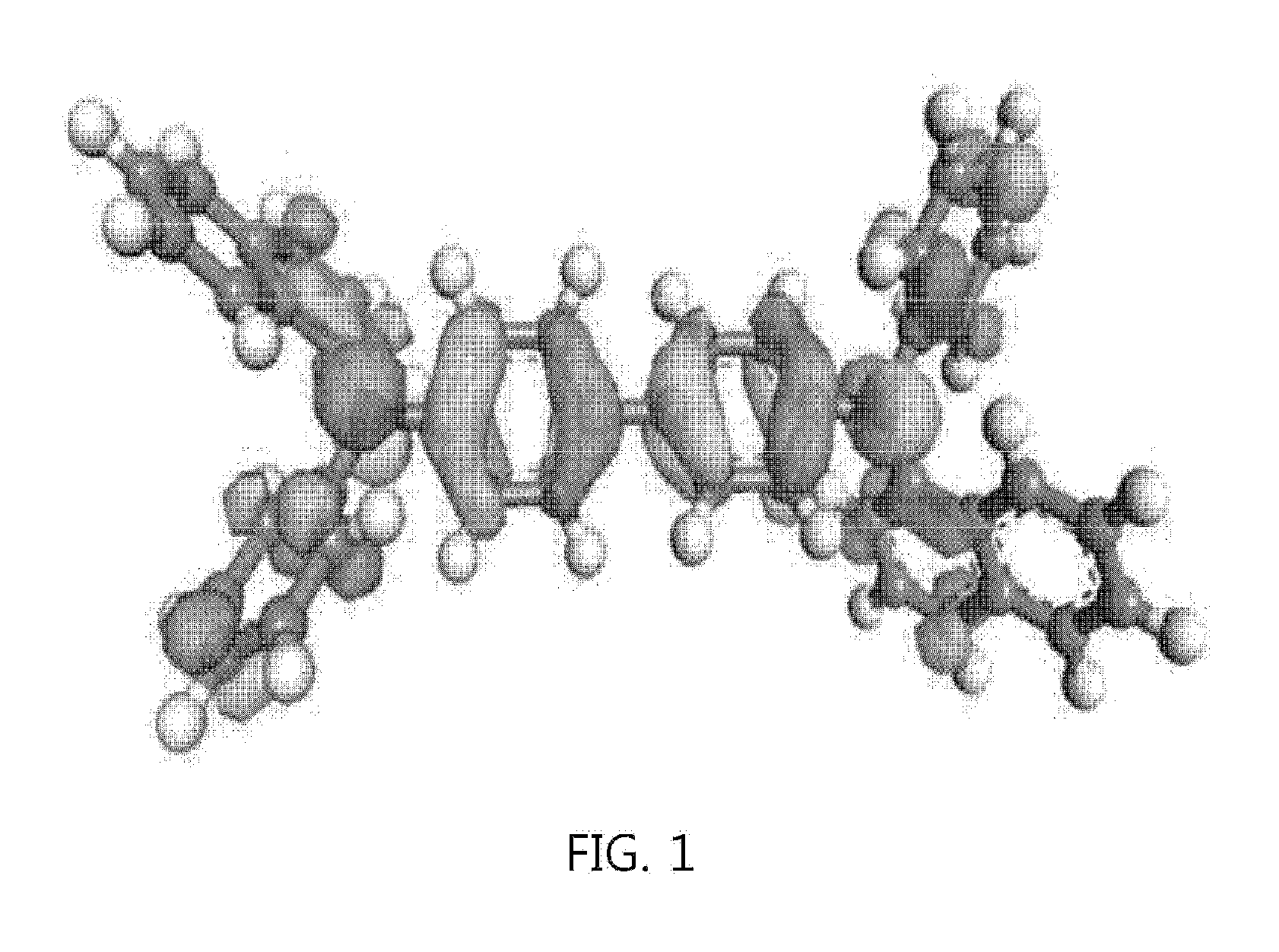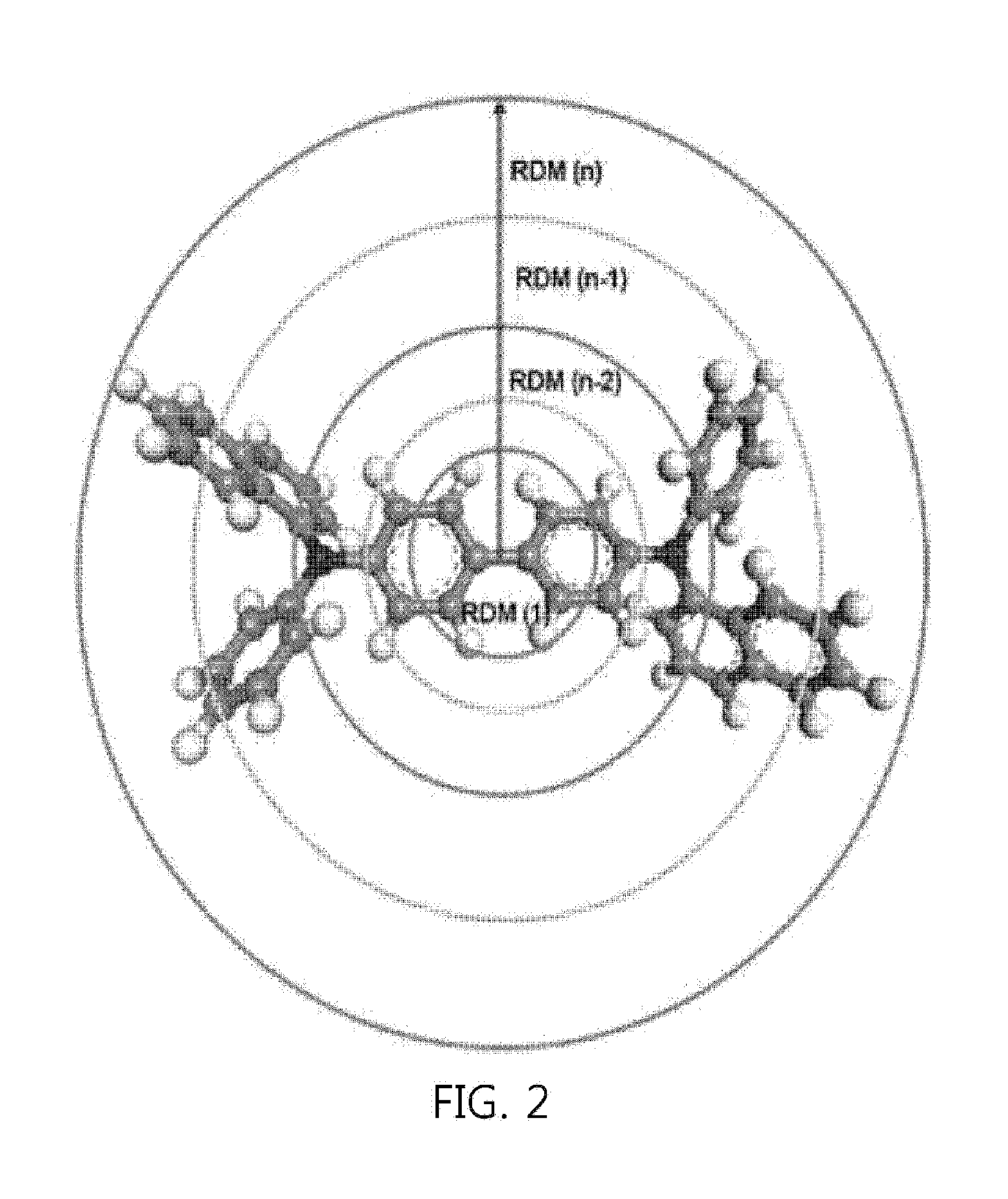Quantitative comparative analysis method for molecular orbital distribution, and system using same
- Summary
- Abstract
- Description
- Claims
- Application Information
AI Technical Summary
Benefits of technology
Problems solved by technology
Method used
Image
Examples
example 1
Comparison of Molecular Orbital Deviation Between Neutral / HOMO and Anion / LUMO
[0039]Referring to FIG. 3, a molecular orbital distribution deviation between Neutral / HOMO and Anion / LUMO is qualitatively explained, indicating even molecular orbital distribution over the entire structure in Neutral / HOMO and localized molecular orbital distribution to opposite ends of the molecule in Anion / LUMO.
[0040]As a result of the quantitative estimation according to the present invention, a MOD-Dscore value of 0.770, much smaller than 1.0, indicates an even distribution of molecular orbitals for Neutral / HOMO, and extreme localization of molecular orbitals in the molecule for Anion / LUMO. Accordingly, the MOD-Dscore method of the present invention explained the molecular orbital distribution deviation between Neutral / HOMO and Anion / LUMO, accurately and numerically.
example 2
Comparison of Molecular Orbital Deviation Between Neutral / HOMO and Cation / HOMO
[0041]Referring to FIG. 3, a molecular orbital distribution deviation between Neutral / HOMO and Anion / LUMO is qualitatively explained, indicating even molecular orbital distribution over the entire structure in both Neutral / HOMO and Cation / HOMO.
[0042]As a result of the quantitative estimation according to the present invention, a MOD-Dscore value of 0.988 is very close to 1.0. Accordingly, the MOD-Dscore method of the present invention explained the molecular orbital distribution deviation between Neutral / HOMO and Anion / LUMO, accurately and numerically, even when the molecular orbital distributions are almost the same.
PUM
| Property | Measurement | Unit |
|---|---|---|
| Molecular orbital | aaaaa | aaaaa |
| Molecular structure | aaaaa | aaaaa |
| Distribution | aaaaa | aaaaa |
Abstract
Description
Claims
Application Information
 Login to View More
Login to View More - R&D
- Intellectual Property
- Life Sciences
- Materials
- Tech Scout
- Unparalleled Data Quality
- Higher Quality Content
- 60% Fewer Hallucinations
Browse by: Latest US Patents, China's latest patents, Technical Efficacy Thesaurus, Application Domain, Technology Topic, Popular Technical Reports.
© 2025 PatSnap. All rights reserved.Legal|Privacy policy|Modern Slavery Act Transparency Statement|Sitemap|About US| Contact US: help@patsnap.com



